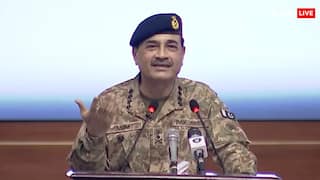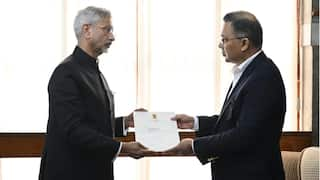Chandrayaan-3 Completes All Lunar-Bound Manoeuvres, Propulsion And Lander Modules To Separate Soon
Chandrayaan-3 Moon Mission: The Indian Space Research Organisation (ISRO) is preparing to make the propulsion module and lander module separate. The next operation is set to ocur on August 17.

Chandrayaan-3 completed all lunar-bound manoeuvres on August 16, 2023, and entered an orbit of 153 km x 163 km, as intended. The spacecraft completed the successful firing at 8:30 am IST on August 16. The Indian Space Research Organisation (ISRO) is preparing to make the propulsion module and lander module separate. The next operation is set to ocur on August 17.
The lunar-bound manoeuvre lasted for a short period of time. The rover is fitted inside the lander, and together, they are called the lander module. The propulsion module will carry the lander module to a 100-kilometre circular lunar orbit. After this, the propulsion module and the lander module will separate.
Chandrayaan-3 Mission:
— ISRO (@isro) August 16, 2023
Today’s successful firing, needed for a short duration, has put Chandrayaan-3 into an orbit of 153 km x 163 km, as intended.
With this, the lunar bound maneuvres are completed.
It’s time for preparations as the Propulsion Module and the Lander Module… pic.twitter.com/0Iwi8GrgVR
Union Minister of Science and Technology Dr Jitendra Singh said that when Chandrayaan-3 reconnoitres the lunar south pole, where several craters of water present, some discoveries may be made that could make it possible to create a human habitat at the Moon.
He also said that the findings of Chandrayaan-3 will benefit the entire world.
#WATCH | MoS Science & Technology Jitendra Singh says, "...The heartening piece of news is that #Chandrayaan3 has finally completed its last lunar manoeuvre...Now the next important milestone would be the propulsion module which we expect to happen on the 17th of August following… pic.twitter.com/nv1861ZYPg
— ANI (@ANI) August 16, 2023
Chandrayaan-3 entered the orbit circularisation phase at 11:50 am IST on August 14, 2023. A near circular orbit is a path taken by a spacecraft or satellite around a celestial body, such as the Moon, that is almost circular, but not perfectly round.
Chandrayaan-3 successfully underwent a planned orbit reduction manoeuvre on August 9. This brought Chandrayaan-3 closer to the Moon. In order to perform this operation, a retro-firing of engines was conducted. This was Chandrayaan-3's third lunar-bound orbit manoeuvre.
Retro-firing allows a spacecraft to be pushed forward because its engines are burnt in a direction opposite to the way the spacecraft was fired.
The spacecraft entered lunar orbit on August 5, and the next day, it performed its second lunar-bound orbit manoeuvre. Lunar orbit insertion of Chandrayaan-3 took place after the ISRO Telemetry, Tracking and Command Network (ISTRAC) commanded a retro-firing at the perilune. The perilune is the point in the lunar orbit at which the spacecraft is closest to the Moon. At perilune, Chandrayaan-3 performed a manoeuvre that allowed it to inject itself into the lunar orbit.
On August 4, Chandrayaan-3 covered two-thirds of the distance between Earth and Moon. On August 1, Chandrayaan-3 entered the Moon's sphere of influence, after successfully completing an orbit-raising manoeuvre or a perigee burn. A perigee burn is one which allows a spacecraft to raise its orbit.
In the early hours of August 1, Chandrayaan-3 completed its orbit around Earth following which it was injected into translunar orbit.
The Chandrayaan-3 spacecraft's voyage towards the Moon began after ISRO's largest and heaviest rocket, the Launch Vehicle Mark III (LVM3), carried India's third lunar exploration mission from Satish Dhawan Space Centre, Sriharikota, Andhra Pradesh.
ISRO aims to land Chandrayaan-3's lander softly on the Moon's south pole. If this is achieved, India may become the fourth nation to complete the soft landing of a spacecraft on the Moon, and also the first country to land a spacecraft on the Moon's south pole.
However, Russia’s Luna 25 spacecraft, which was launched on August 11, is expected to land on the lunar south pole on August 21, which is two days before Chandrayaan’s tentative landing date. Therefore, a lunar race has ensued. The country whose spacecraft lands first on the lunar south pole will become the first country to achieve this milestone.
Related Video
Southern Rising Summit 2024: How Important is Self-Awareness? Insights from Anu Aacharya | ABP LIVE





































